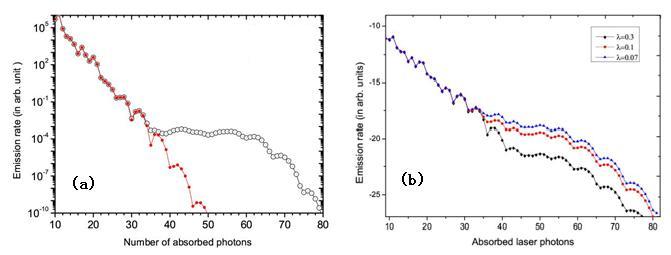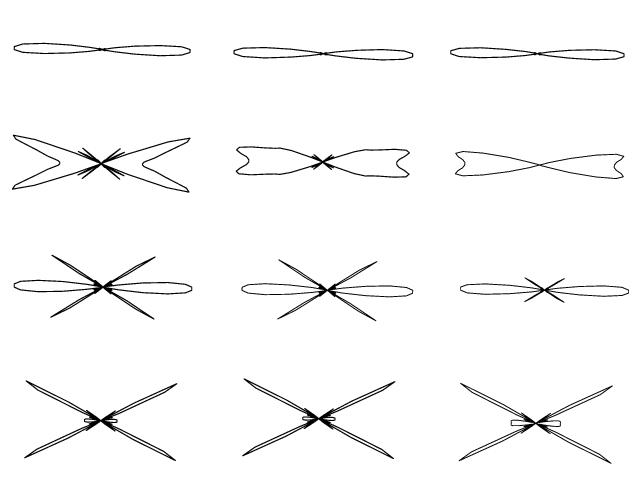When atoms or molecules are irradiated by an intense laser field, the bound electrons of them are excited into continuum states. Many of the electrons are directly ionized, and the rest of the electrons are pulled back to the vicinity of their parent cores, when the electric field of the incident laser reverses. Then the attraction of their parent cores becomes the dominant factor that governs the subsequent motion of those driven-back electrons. So the rescattered photoelectrons bring out the inner information about the core.
Rescattered photoelectrons are greatly affected by the binding potential of the parent core, while directly emitted photoelectrons are not. They are of comparable probability amplitudes at the onset of the plateau in the photoelectron energy spectrum (PES), as shown in Fig. 1 (a), thus their interference effect is strong, which leads to the photoelectron angular distributions varying distinctively with binding potential of the targets.
In December this year, researchers at the State Key Laboratory of High Field Laser Physics, Shanghai Institute of Optics and Fine Mechanics, Chinese Academy of Sciences(SIOM,CAS) Wu Yan, Ye Huiliang and Zhang Jingtao exhibited such variations and proposed that the variations can be used to extract potential information of the target core.
Such a scheme has unique advantages which were not disclosed by other related studies. During their experiments, the results can be easily expanded into other model potentials, which provide an important reference for extracting information on the scattering potential from the re-scattered photoelectrons.
In order to extract the core information, one needs a reference that is obtained by theoretical calculations of the atoms with the same binding energy and the known wave function irradiated by an identical laser ?eld. The differences between the experimental data and the model calculations originate from the different core structures. This work was published in recent issue of Phys review A. 84, 043418 (2011).
 |
|
Fig. 1 (a) The solid red dots denote the emission rates of the directly ionized photoelectrons; The hollow circles denote the total emission rates. (b) Calculated energy spectra for photoelectrons rescattered by the Yukawa potential with several screening parameters.(Image by SIOM) |
 |
|
Fig. 2 Polar plots of the PADs calculated using the Yukawa potential. The PADs from the top to the bottom row are of the 28th, 35th,42nd,and 45th ATI, respectively. The screening parameter in each column is 0.07 (left), 0.1 (middle), and 0.3 (right).(Image by SIOM) |